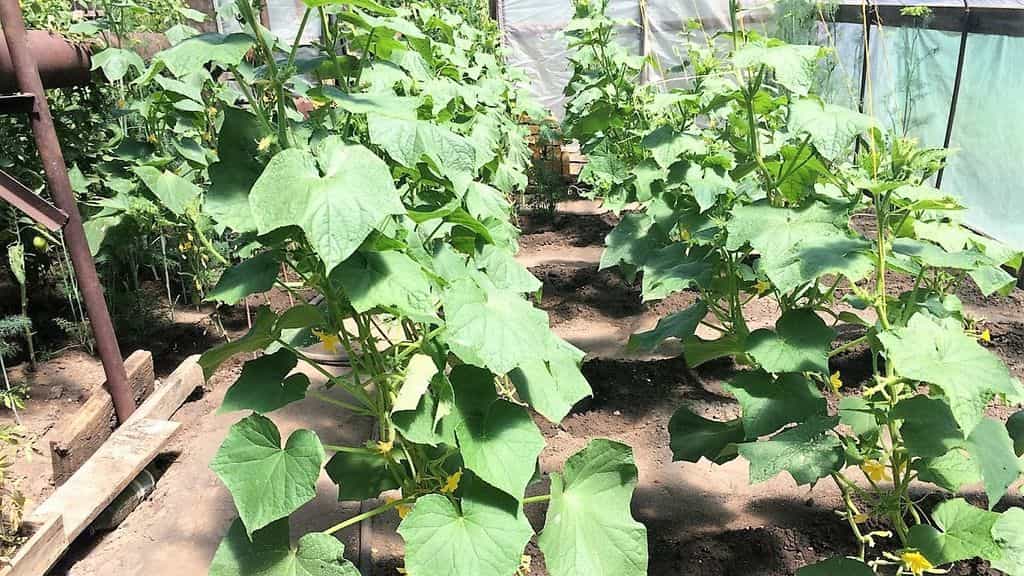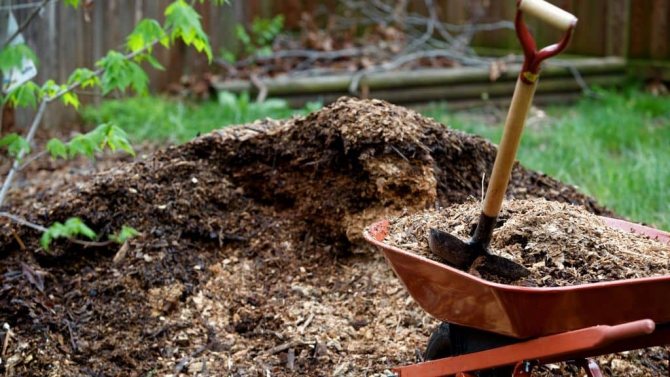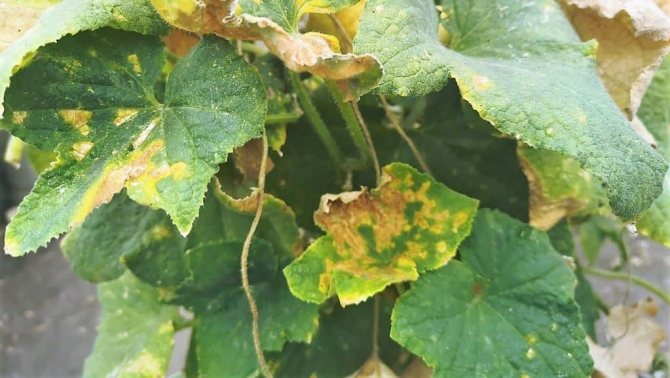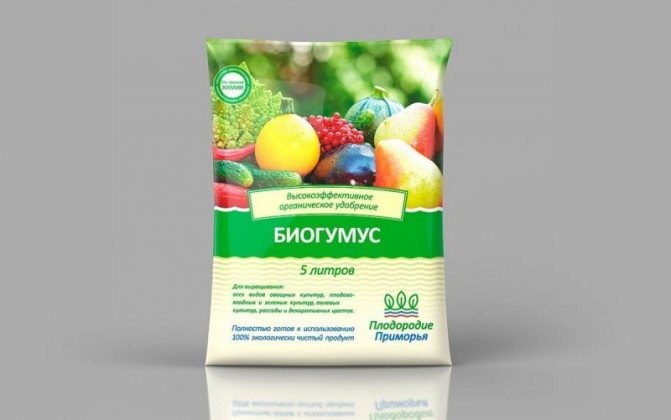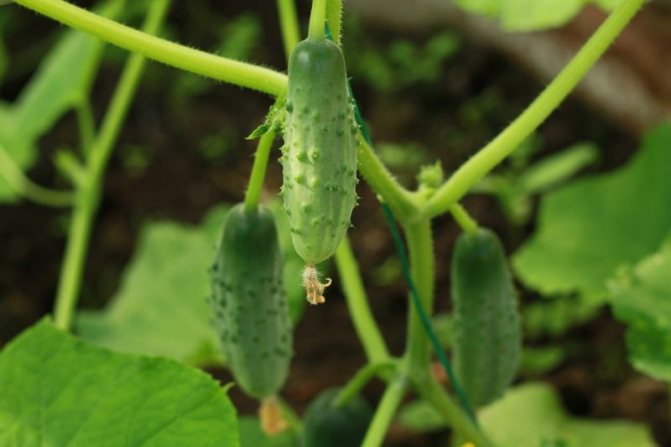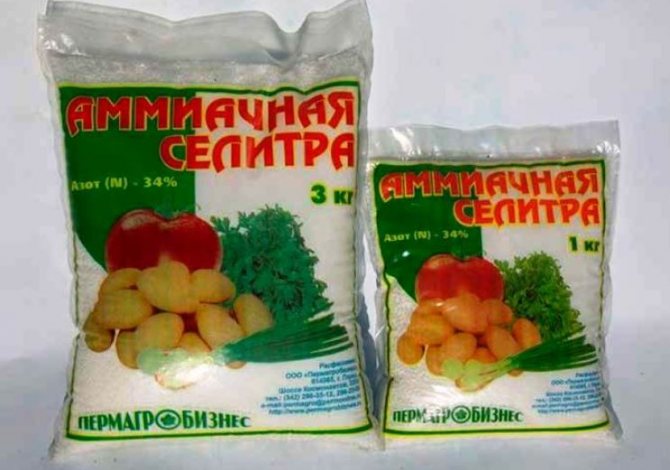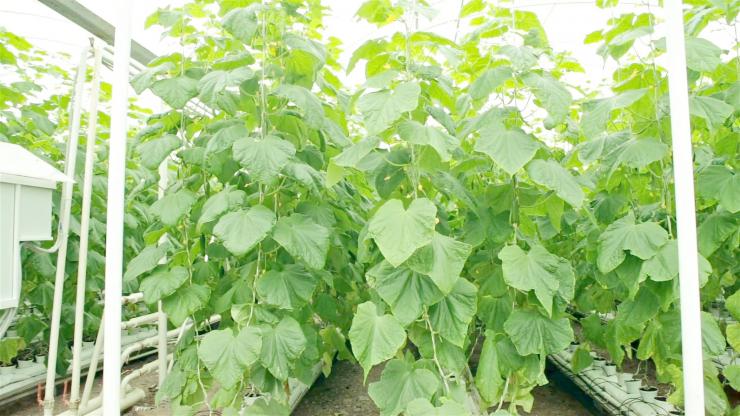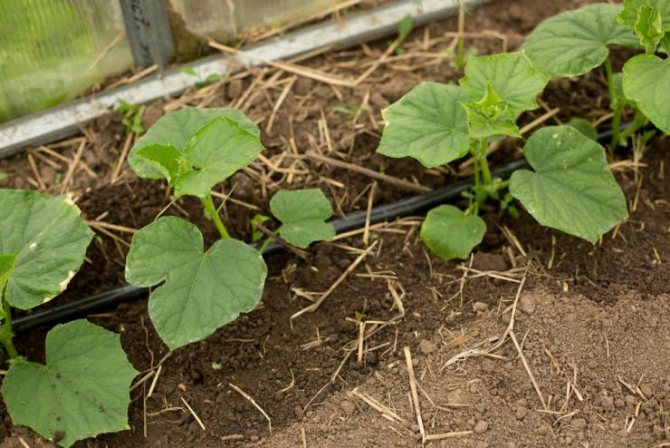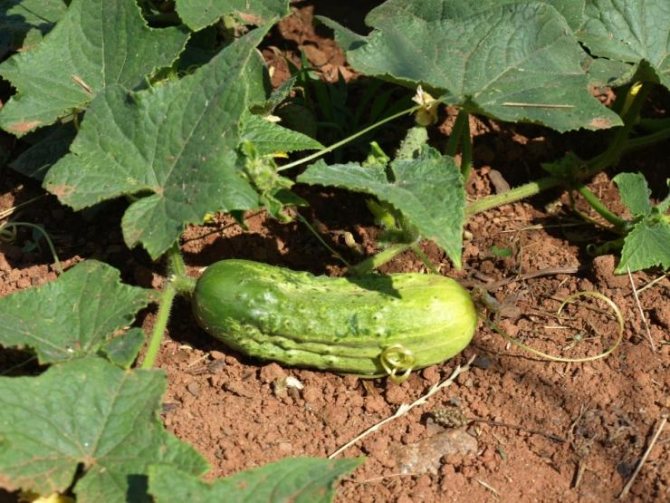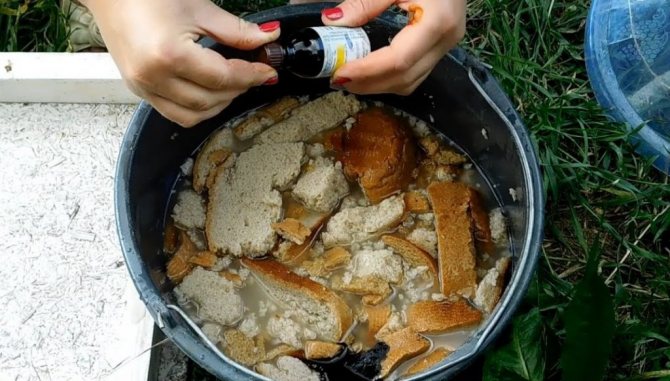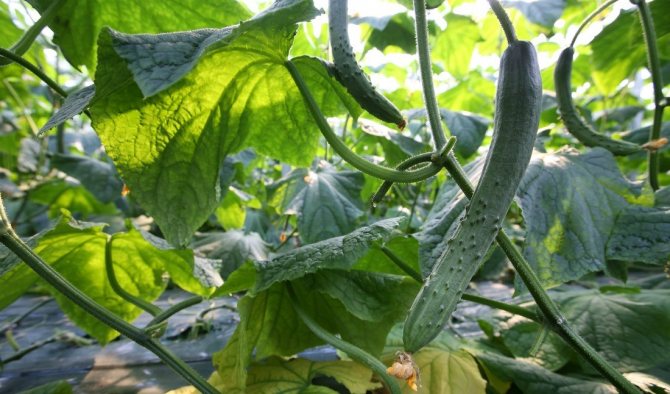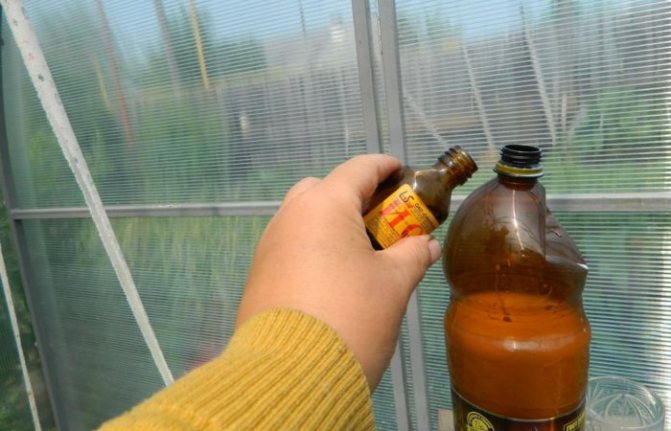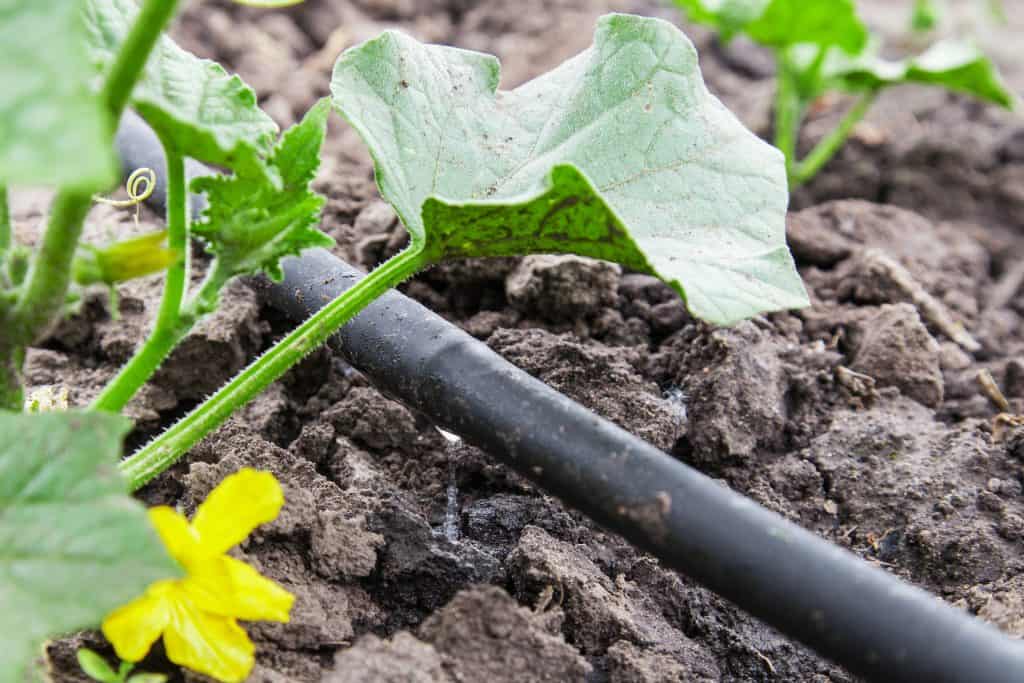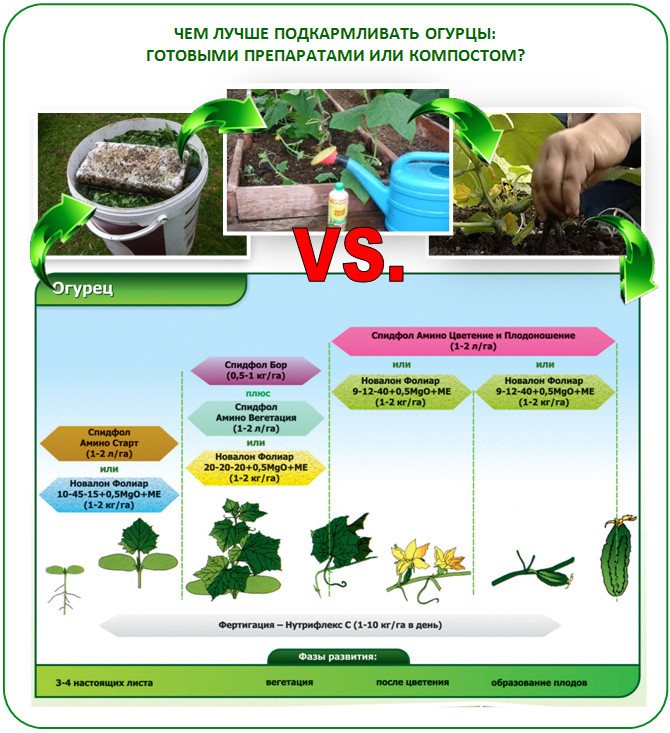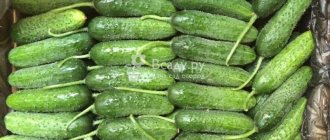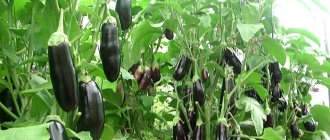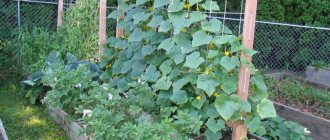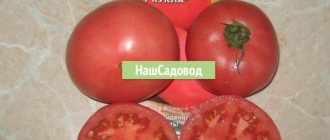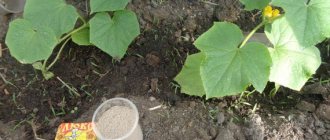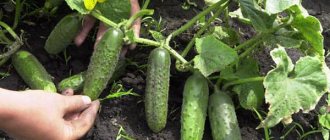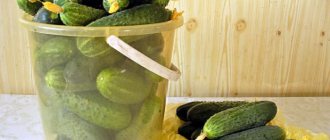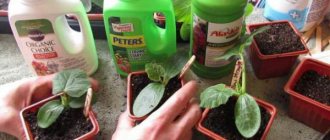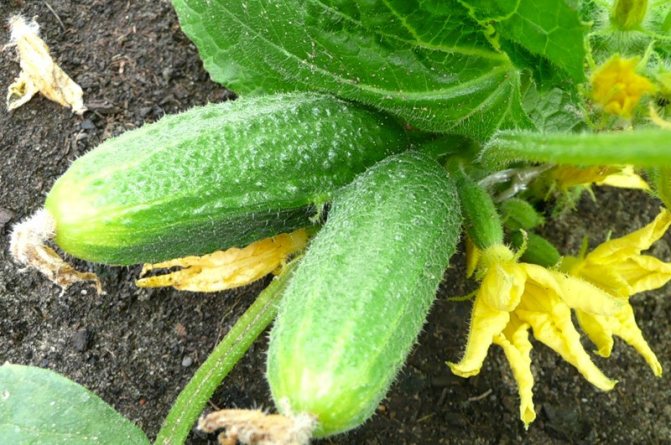
Greenhouse cucumbers
To obtain a good harvest of greenhouse cucumbers, it is necessary not only to strictly maintain the temperature and humidity conditions in the greenhouse, but also to provide the plants with all the nutrients necessary for their life and fruiting.
Cucumbers are plants with a very high growth and ripening rate, but at the same time, their root system is rather weak, which is why the cost of most mistakes is high - a loss in the quality and quantity of the yield obtained.
The following minerals are most important for optimal growth and fruiting of cucumbers:
- nitrogen;
- potassium;
- phosphorus.
Before we move on to looking at the top dressing needed for greenhouse cucumbers, let's look at how to prepare the greenhouse soil for this vegetable crop.
Where to begin
A rich harvest is not only high-quality seed material, but also an attentive attitude of the farmer to the plants. The conditions for the formation of healthy seedlings always depend on the nutritional value of the soil on which the vegetable vine develops. The crop reacts painfully to micronutrient deficiencies, so it is important to properly prepare the greenhouse before planting seeds.
After the previous fruits are harvested, the greenhouse is carefully cleaned. They remove plant residues, dig up and disinfect the soil. For the winter, compost or rotted manure is added to the soil. Dolomite flour or fluff lime is added to reduce acidity.
In early spring, the loosening procedure is repeated. An important event is held at least 2 weeks before the start of planting work.
Fertilizer
As a fertilizer for cucumbers in a greenhouse, a mixture is used, which includes (in grams):
- potassium salt - 20;
- superphosphate - 25;
- potassium sulfate - 15;
- ammonium nitrate - 30.
After the soil has been fed and dug up, the soil is watered with a warm solution of potassium permanganate and covered with dense polyethylene. This trick allows not only to provide plants with all the nutrients, but also to protect against infections. The film is removed just before planting.
Feeding schedule
When to fertilize cucumbers in the greenhouse? Despite the fact that the vegetable liana belongs to the gluttonous species, there is a set of rules for normal development. For each stage of formation, certain mineral supplements are required.
- The beginning of the growing season. After the seeds have sprouted and 3 adult leaves have appeared, the first application can be carried out. A strong root system intensively assimilates nitrogen, which activates metabolic processes.
- The development of the lashes. During this period, the plant needs potassium, which is responsible for the formation of shoots.
- Bloom. To ensure the normal process of budding and fruit setting, the culture needs phosphorus.
Top dressing in a polycarbonate greenhouse
Fertilizing cucumbers in a polycarbonate greenhouse has some differences from the basic requirements. The fact is that in a closed ground, the culture does not receive enough sunlight, so it needs additional support in the form of minerals.
In order for the seedlings to grow healthy, fertilization is carried out in several stages:
- 2 weeks after sowing;
- before flowering;
- after the petals fall;
- during the formation of fruits.
On average, the application takes place every 10-15 days.The most difficult period for a vegetable liana is during the ripening of cucumbers. For better assimilation of substances, farmers recommend to spray the culture with adaptive preparations "Epin" or "Zircon".
How to determine what is lacking in a culture?
Any nutrient that is included in the fertilizer is absorbed by the crop in a certain amount. If the plant experiences an excess or deficiency of any component, then this is immediately visible - the foliage becomes dull, the ovary is practically not formed. It is possible to determine which nominal component is lacking in cucumbers by its appearance.
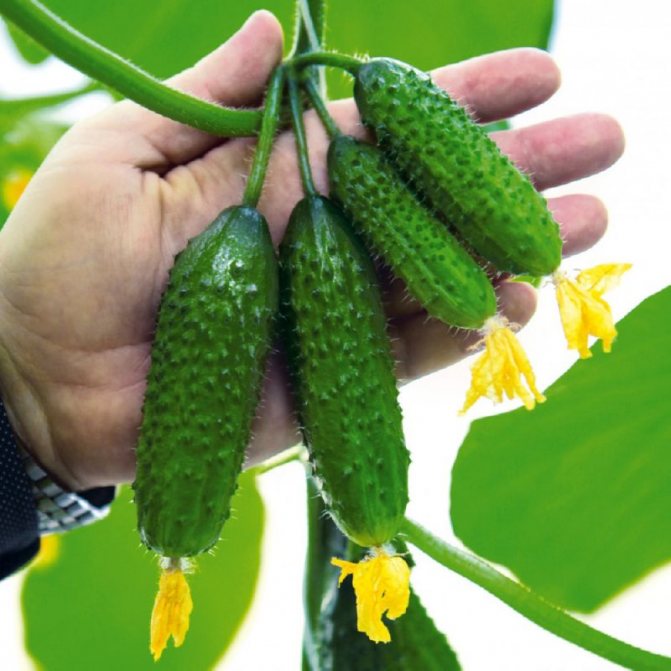

Nitrogen, like other nutrients, is essential for all plants to grow properly. Cucumbers in each period of development require it in different quantities. A great need for nitrogen arises in the spring, when the formation of greenery is observed. If the cucumbers lack nitrogen at the beginning of the growing season, this will negatively affect fruiting.
The first signs of nitrogen deficiency:
- the leaf becomes light, gradually turns yellow and dries;
- the fruits brighten, turn gray at the base, where the flower is, acquire a pointed shape;
- there is a slowed-down growth of stems or its complete cessation;
- the formation of the ovary stops.
Expert opinion
Stanislav Pavlovich
Gardener with 17 years of experience and our expert
Ask a Question
If there is an excess of this nutrient, then the skin of the fruit turns yellow, stains are formed and there is no smell of cucumber. Before you start fertilizing the garden, you need to pay attention to other points that can provoke disturbances in growth and development: regularity of watering, lighting of the greenhouse.
The need for potassium is manifested during the fruiting period. If at this time the cucumbers lack potassium, then the fruits will be of poor quality. Signs indicating a lack of potassium:
- fruits without a pronounced cucumber taste and aroma;
- deformation of the fruit;
- drying of the edges of the leaf, yellowing of the lower part of the bush.
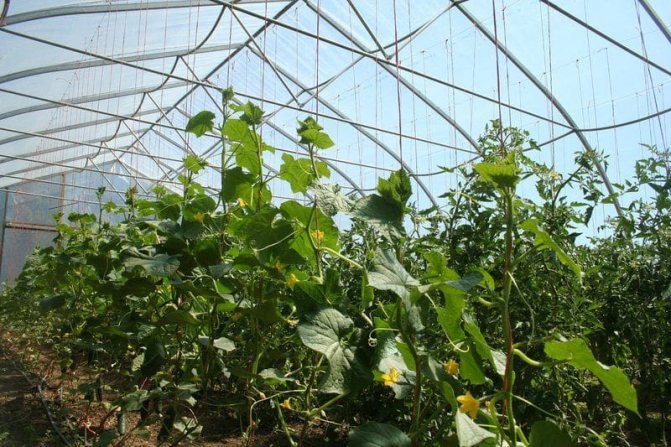

Potassium sulfate or ash is suitable for root feeding.
Phosphorus is also considered a necessary component for full development. With its deficiency, cucumbers show the following symptoms:
- the growth of the lashes becomes slower;
- the size of a young leaf is much smaller than the old one;
- the veins of the leaf turn purple, the leaf darkens, and in a critical situation dies completely.
For root and foliar feeding, ammophos or superphosphate is used.
See also At what distance to plant cucumbers when planting in open ground and in a greenhouse
How to fertilize
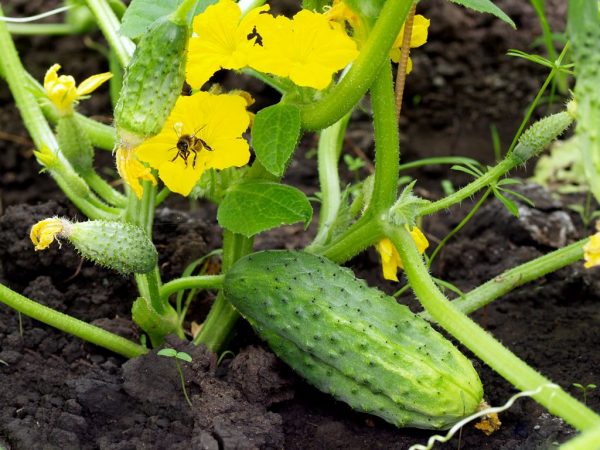

You need to choose the right method of fertilizing
To provide a full-fledged menu, not only root irrigation is carried out, but also irrigation with fertilizer solutions on the leaf. What is the difference between the types of application and when is this or that procedure needed? In order not to get confused, it is necessary to understand in detail agricultural activities.
- The first feeding of cucumbers in the greenhouse is always carried out at the root. During this period, the underground parts are already sufficiently developed, therefore they easily absorb the proposed mixtures. It is important not to try to feed the plants earlier than 2 weeks after germination, otherwise the chemicals will burn the delicate tissues.
- Foliar procedures in a greenhouse are best done in cloudy weather. With a lack of sunlight, nutrients are poorly absorbed. Sheet processing quickly delivers the required components, activating metabolic processes. Experienced gardeners recommend alternating agricultural work.
- Fertilization by irrigation takes place after irrigation. Pouring a chemical or organic solution onto untreated roots may result in burns. After such procedures, the plants recover for a long time, which worsens the yield.
- Foliar dressing of cucumbers in the greenhouse is carried out with any complex preparation.The product is dissolved in water according to the instructions, filtered and poured into a special sprayer. To protect yourself from chemical poisoning, you must cover your face and body with protective clothing.
Organic fertilizers for the growth of cucumbers
Organics are the best option for growing cucumbers. It is better absorbed by plants and makes it possible to grow healthy foods. The most common recipes for mixtures of mullein and bird droppings.
To prepare the solution, rotted droppings are diluted in a ratio of 1:10, fresh - 1:20. At the end of the season, add when digging. Watered at the root.
Cow dung is also used in a fresh, rotted, semi-rotted form. Fresh manure can only be used in the fall when digging. For watering, you can prepare a mixture of 1 liter of mullein and 2 liters of water. The resulting mass is kept for 1 week. Then, for application under bushes, dilute with 500 ml with 1 bucket of water.
In the video, the author tells in detail how greenhouse cucumbers can be fed with fertilizer from chicken manure.
Complex mixtures
How to feed cucumbers in a greenhouse? A complete diet for a vegetable vine can be obtained by mixing ready-made minerals. Inexpensive industrial options are easy to buy at any hardware store.
Ammofoska
A universal fertilizer containing elements important for plant development. This is a great option for spring and summer dressing, but it is contraindicated in the fall (it enhances foliage growth). Suitable for all types of soil, especially relevant for regions with arid climates.
The drug begins to act as soon as it enters the soil. Due to its optimal composition, it activates the metabolic processes of culture at all stages of development. It does not require any other additives, therefore it is often used as a sole complex.
Nitrophoska
A more concentrated version of ammophoska, which is produced in the form of granules. As a top dressing for cucumbers in a greenhouse, a sulfuric acid modification is suitable. The product not only fertilizes plants, but also repels parasites.
The dry preparation is introduced into the soil to a depth of 10 cm, and for an aqueous solution, 40 g will be needed per bucket of liquid. Each bush of vegetable vines is watered with 0.5 liters of the substance. Complex feeding is self-sufficient and does not require any additives.
Diammophos
Chemically neutral substance, perfectly absorbed by cucumbers. Most often it is used to irrigate seedlings. After planting in closed or open ground, the plants experience severe stress. To ensure normal development, they use proven means.
Watering is carried out in the morning or in the evening, the granules can be scattered between the beds. For 1 sq. m of soil will need 15 g of the chemical. The drug is indicated before flowering, after which they switch to other mixtures.
When to feed cucumbers in the greenhouse


Usually, cucumbers are planted in greenhouses not by seedlings, but by seeds, since seedlings appear quickly in greenhouses, they practically do not get sick, do not suffer from transplantation, which in this case will not be needed.
It will be necessary to apply fertilizers for this vegetable crop several times per season, the main thing is to remember that the lack of nutrients for cucumbers is just as destructive as their excess. Therefore, it is necessary to adhere to the recommended dosages of application to the soil or "on the sheet" of fertilizers.
Top dressing is usually applied immediately after watering so that the delicate root system of cucumbers does not burn.
Under these vegetable plants, fertilizers dissolved in water are most often applied, because such fertilizing by the root system of cucumbers is absorbed much better. The frequency of fertilization is once every 12-14 days, while it is desirable to alternate foliar and root dressings, the introduction of organic matter and complex minerals, as well as folk remedies.
Usually, fertilizer is first applied under several bushes, and if they take fertilizer well, then you can fertilize all the cucumber beds.
When applying dressings, you need to ensure that they do not include preparations containing nitrates and chlorine.
After landing


Since the necessary fertilizers were applied to the greenhouse beds before planting the cucumbers, their first feeding is carried out when at least 2 real leaves appear on the plants.
It is not worth wearing fertilizing with manure under cucumber lashes - this vegetable crop does not tolerate an excess of organic manure. It is best to introduce complex diluted mineral fertilizers into greenhouse beds, diluted in water in a proportion of 1 g of the drug per 2 liters of water.
However, you can make your own formula by mixing the following ingredients:
- 10 g of superphosphate and potassium nitrate;
- 0.2 g of copper sulfate, zinc, manganese;
- 1 bucket of water
The following nutritional composition is also effective:
- 7 g ammonium nitrate;
- 15 g superphosphate;
- 8 g of potassium sulfate;
- 1 bucket of water
During flowering and fruiting
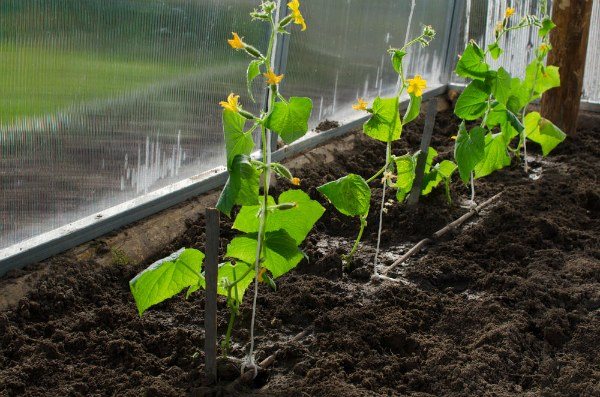

The second feeding is carried out 6-8 days after the first. The composition of such a fertilizer is the same as for the first, only the dosage of the components is twice as high.
For the third time, fertilizers are applied under greenhouse cucumbers 13-16 days after the second feeding. The composition of such a mixture may be as follows:
- urea - 2 tsp;
- superphosphate - 1.5 tsp;
- potassium chloride or sulfate - 1.5 tsp;
- 1 bucket of water
Important! Although most summer residents apply the first top dressing for this vegetable crop only 12-14 days after planting them in a permanent place, some farmers prefer to apply mineral fertilizers directly when planting seedlings or cucumber seed material in protected ground.
In summer
During the summer period, under the cucumber lashes, you can make top dressing from folk remedies, which also contribute to the rapid ripening of cucumbers and the growth of lashes. Such dressings can be:
- bird manure diluted in water in a ratio of 1:15. This organic matter is infused for several days, then filtered and diluted in a ratio of 1:10 before being introduced under vegetable plants;
- cow dung, bred in a ratio of 1: 6 (or 1: 8);
- "greenfinch". Weeds and other greens collected in the garden or vegetable garden are placed in a large tank (at least 10 liters in volume), filling it at least half. The rest of the space is filled with water and infused for 5-7 days. From above, the container is covered with a lid so that the not too pleasant aroma of rotting grass does not spread over the area. Then the infusion is filtered, a 0.5 liter jar of such fertilizer is added to each bucket of irrigation water.
But when applying manure fertilizers for cucumbers, one should not exceed the dosage, because too much of such organic matter accumulated in the soil has too negative an effect on the growth and ripening of the fruits of this vegetable crop.
In August to prolong fruiting
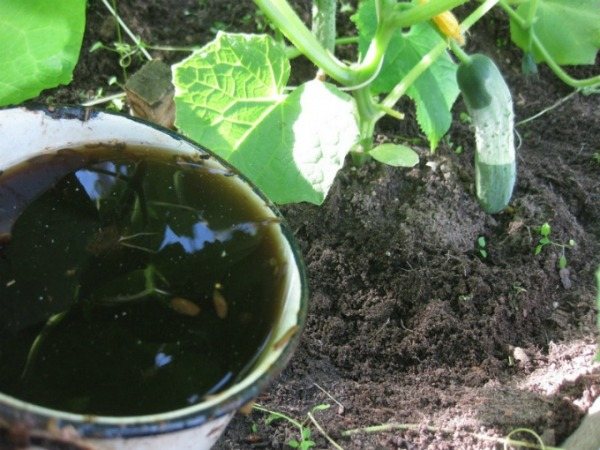

In August, you can achieve an extension of the fruiting of cucumbers until autumn, if only to protect the bushes from powdery and downy mildew. For this, plants are treated with preparations containing copper.
And fertilizers this month can be applied both “at the root” and “on the leaf”.
The following preparations can be used as foliar dressings:
- urea, which is diluted in the following proportion: 15 g of the drug is diluted in a bucket of water;
- you can also use effective growth stimulants such as Elin or Zircon.
Also, do not touch those bushes of plants that have fallen to the ground - they have additional roots, which will also be a source of food for depleted lashes.
But still, those varieties of cucumbers that are located vertically in the beds in the greenhouse bear fruit longer - the whips receive the same amount of light, are better ventilated, are practically not affected by pathogenic microorganisms and grow longer.
Mixed feeding options
Fans of natural farming prefer organic products. They are not as concentrated and complex as those listed above, but they do not tend to accumulate in fruits.In liquid form, bird droppings, mullein and manure are used; for dry applications, it is better to use humus.
Natural dressings are applied directly to the root. The most relevant time for procedures will be the period of flowering and fruiting. In this case, the plants receive all the necessary substances for the ovaries and do not accumulate nitrates. There are several mix options.
- Combined. In 0.5 buckets of liquid, dilute a cup of droppings and 3 tsp. nitroammophos.
- Organic. Add 0.4 cups of mullein and 5 g of urea to 5 liters of water.
- Mixed. On a bucket of liquid, take 0.5 cans of wood ash, 0.2 ml of manure and 1 tbsp. l. ammophoska.
To get quality fruit, it is important to make good use of the recommended mixes. An excess of organic matter in the soil can provoke the active growth of weeds. Humid indoor air in combination with abundant fertilizers activates the appearance of late blight.
To increase yields, cucumbers should not be fed with animal formulations such as 8 in 1 Calcidi. Despite the long list of beneficial micronutrients in each tablet, plants will not be able to absorb them. In addition, the mineral supplement contains substances that can harm greenery.
Application methods
Regardless of the option for the introduction of nutrients, the soil should be wet.
Root
Root complementary foods are made with the use of potash, phosphorus and nitrogen components. The ratio is 1: 1: 2. The maximum concentration should not exceed 25 grams. 10 liters. water. The prepared amount is applied to an area equal to 1.5-2.5 sq.m. For the convenience of the procedure, you can use a complex product - "Nitroammofosku".
For root applications, you can use formulations for tank preparation, application with drip irrigation.
Foliar
Foliar feeding is performed with the inclusion of stimulants, phytohormones, chelated microelements. The procedure is irrigation of the green mass of cucumber liana, spraying.
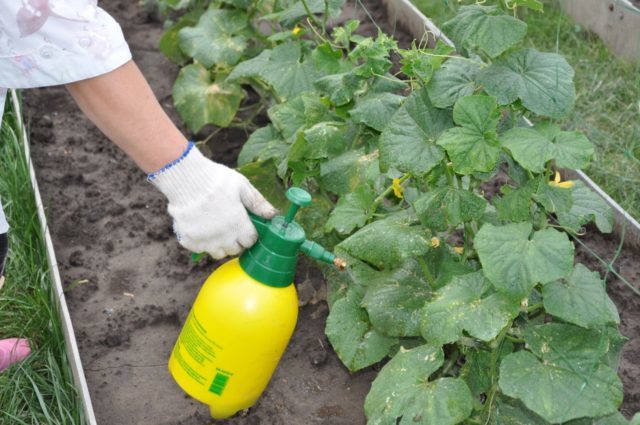

With the inclusion of stimulants, foliar complementary foods are performed
Natural remedies
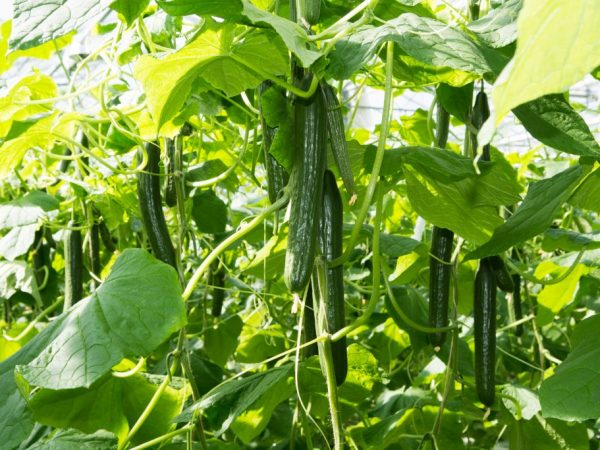

Herbal Tinctures Promote Rapid Growth
How else to fertilize cucumbers in a polycarbonate greenhouse? Unusual mixtures are often used as non-chemical agents. Adherents of natural farming prefer to irrigate with an infusion of garden herbs:
- swans;
- nettle;
- plantain;
- wormwood.
1 kg of shredded raw materials is poured into 12 liters of hot liquid, stirred and left to infuse for 24 hours. A day later, filter through a rag and water 3 cans per 1 sq. m. The product is not as concentrated as chemistry or organic matter, so irrigation occurs every week.
You can fertilize plants in a polycarbonate greenhouse in the old old-fashioned way. When planting cucumbers, peas steamed in water are added to the holes. The developing assistant improves the quality of the soil, allowing seedlings of other crops to adapt well to conditions and grow faster.
Another little-known way of feeding cucumbers for fruit formation is yeast. A hundred-gram pack of the product is diluted in a bucket of warm liquid and left to ferment for 24 hours. The composition is added to the water for irrigation and the vegetable vine is irrigated.
Possible problems
If the leaves of a plant turn yellow or wither, this may be an indicator of a deficiency of any trace element. With the wrong care, the culture often lacks substances important for development. In order for the cucumbers to bear fruit, you need to know the enemy by sight.
Nitrogen
The culture perceives the lack of a trace element very painfully. The very first signs are pale leaves and pointed tips of vegetables. Gradually, the greens brighten, turn brown and die off, the vine slows down development.
If a nitrogen deficiency is discovered during fruiting, you should not immediately use industrial preparations.During this period, chemistry has a habit of settling in the juicy pulp in the form of nitrates. It is better to give preference to less aggressive organic feeding.
Potassium
The lack of a trace element during growth manifests itself in the form of burns with streaks on the foliage. Gradually the disc darkens, disappears, and the development of culture stops. A cucumber narrowed at the stalk becomes a bright omen. With a deficiency, the absorption of other important nutrients deteriorates.
Excessive application of nitrogen fertilizers at the beginning of the season can provoke potassium starvation in cucumbers in the second half of summer.
The component reserves are replenished with foliar irrigation of potassium sulfate. Wood ash can be used without harm to the crop. The agent is added to the water, after which the beds of the diseased plant are watered.
Phosphorus
Its deficiency manifests itself in the form of rich green foliage of the seedlings, which gradually takes on a purple hue. The dried plates darken, covered with purple veins. During fasting, the cover of the creeper is small, dense, with the tips curled down.
The problem is solved with any phosphorus-containing drug - ammophos or diammophos. Organic options in this case will not be so relevant, so it is better to give preference to chemistry. To avoid trouble, care must not be taken into account.
Calcium
The presence of "golden" spots on the foliage is a sign of a lack of substance. Most often, a deficiency is observed on acidic soils, which is typical when grown in greenhouses. Light yellow markings creep through the greenery, slowing down the growth of the bush and killing the root system. During fruiting, hungry cucumbers turn out to be small, tasteless and covered with an unpleasant roughness.
The element is in wood ash, so for a good harvest, you should not spare the product during watering. As professional drugs, preference is given to calcium sulfate or superphosphate. If you do the application correctly, the metabolic processes of the plants improve.
If all agrotechnical requirements are met, growing vegetables in a greenhouse will not be a problem. A bountiful harvest will be a pleasant gift for an attentive farmer.
Signs of a deficiency or excess of minerals
The change in the quantitative and qualitative content of substances necessary for the healthy growth of cucumbers can be determined by explicit or indirect signs:
- Nitrogen deficiency can be recognized by a change in the color of the foliage from bright green to yellowish with brown patches. Such a change in color indicates a quick slowdown in growth, drying of peduncles, ovary.
- Potassium deficiency is characterized by the folding of the edges of the leaves and their yellowing. The deficiency of this element affects the ripening of fruits, the formation of their correct shape.
- The lack of the required amount of phosphorus is manifested by the darkening of the leaf blades of plants, their wrinkling. The lower leaves acquire a light shade and soon disappear.
- Magnesium deficiency is the impetus for the development of chlorosis. The main signs of this deficiency are the yellowing of the edge of the leaf plates, the falling of flowers, the drying of the ovary.
- Lack of calcium provokes crushing of the leaves of the vine, the appearance of whitish lines on them. Subsequently, such leaves dry out and fall off.
- Iron deficiency is expressed by inhibition of growth, the gradual withering of the culture.
Along with a deficiency of substances, their excess can lead to malnutrition and the development of the cucumber culture:
- excess nitrogen pushes the flowering time, such a plant has a thickened stem, an increased amount of green mass;
- excess phosphorus causes yellowing of the vine, the development of areas of necrosis, foliage falling;
- potash overfeeding delays the growth of vegetative mass;
- excess calcium provokes the appearance of whitish spots of necrosis, chlorosis.
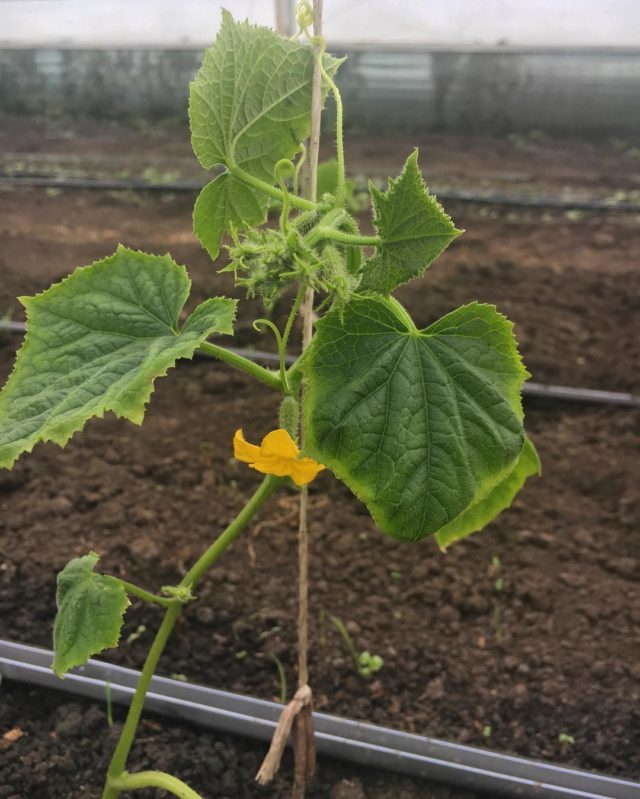

The presence of the required amount of minerals ensures good growth of the culture

